My Ultimate CCNA Study Plan
The internet is flooded with CCNA “study guides” that are little more than chaotic lists of resources.
This is not one of those guides.
To launch this blog, I’m sharing the complete blueprint I used to pass the CCNA 200-301: a repeatable framework designed to turn information overload into a structured, confident study plan.
My goal is simple: to share the exact map that got me to the finish line.
Welcome, and let’s get you certified.
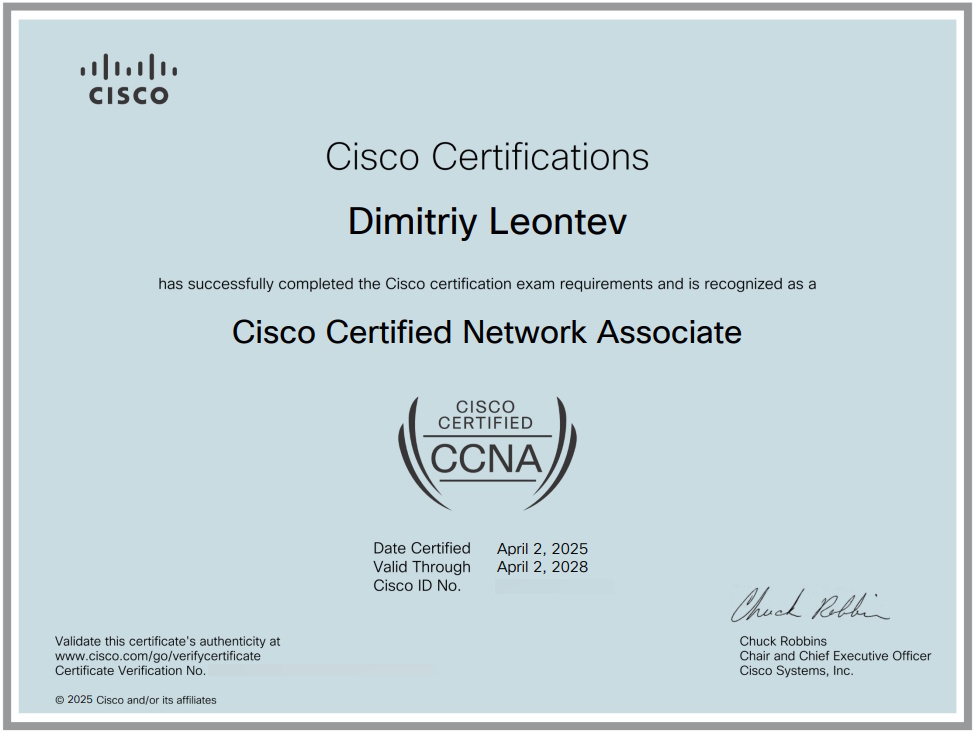
My Core Philosophy: The Learn, Lab, Test Triangle
Before we dive into the resources, let’s talk about strategy. Randomly watching videos and reading book chapters won’t get you there. You need a system. I built my entire study plan around a simple, powerful framework I call the “Learn, Lab, Test Triangle.”
It works like this:
- Learn (Theory & Concepts): You can’t configure what you don’t understand. This is the foundational stage where you absorb the “what” and the “why” through books and video courses.
- Lab (Hands-On Application): Theory is useless until you apply it. This is where knowledge turns into skill. In the lab, you get your hands dirty on the command line, building, breaking, and fixing networks.
- Test (Knowledge Validation): How do you know what you don’t know? After covering a large portion of the topics, this is the final, critical phase to find your weak spots and bridge the gap between knowing the material and being truly exam-ready.
This cycle, Learn, Lab, Test, and repeat, was the engine that drove my progress.
📚 Pillar 1: Building the Foundation (Learn)
This is where it all begins. A solid theoretical understanding is non-negotiable.
Wendell Odom’s CCNA 200-301 Official Cert Guide: The Bedrock
This two-volume set is the definitive gold standard for a reason. Wendell’s extensive writing experience shines through in every chapter. His ability to walk you through incredibly complex concepts in a detailed, step-by-step manner is unmatched. This depth is essential for building a true, lasting understanding of the technology.
How I Used It
I treated this as my primary textbook. I would often pre-read a chapter before watching a video on the topic, or I’d circle back to it after a lab session if a concept felt fuzzy. The “Do I Know This Already?” quizzes at the start of each chapter are fantastic for gauging your baseline knowledge, and I made sure to complete the review exercises at the end of each chapter to truly solidify the concepts.
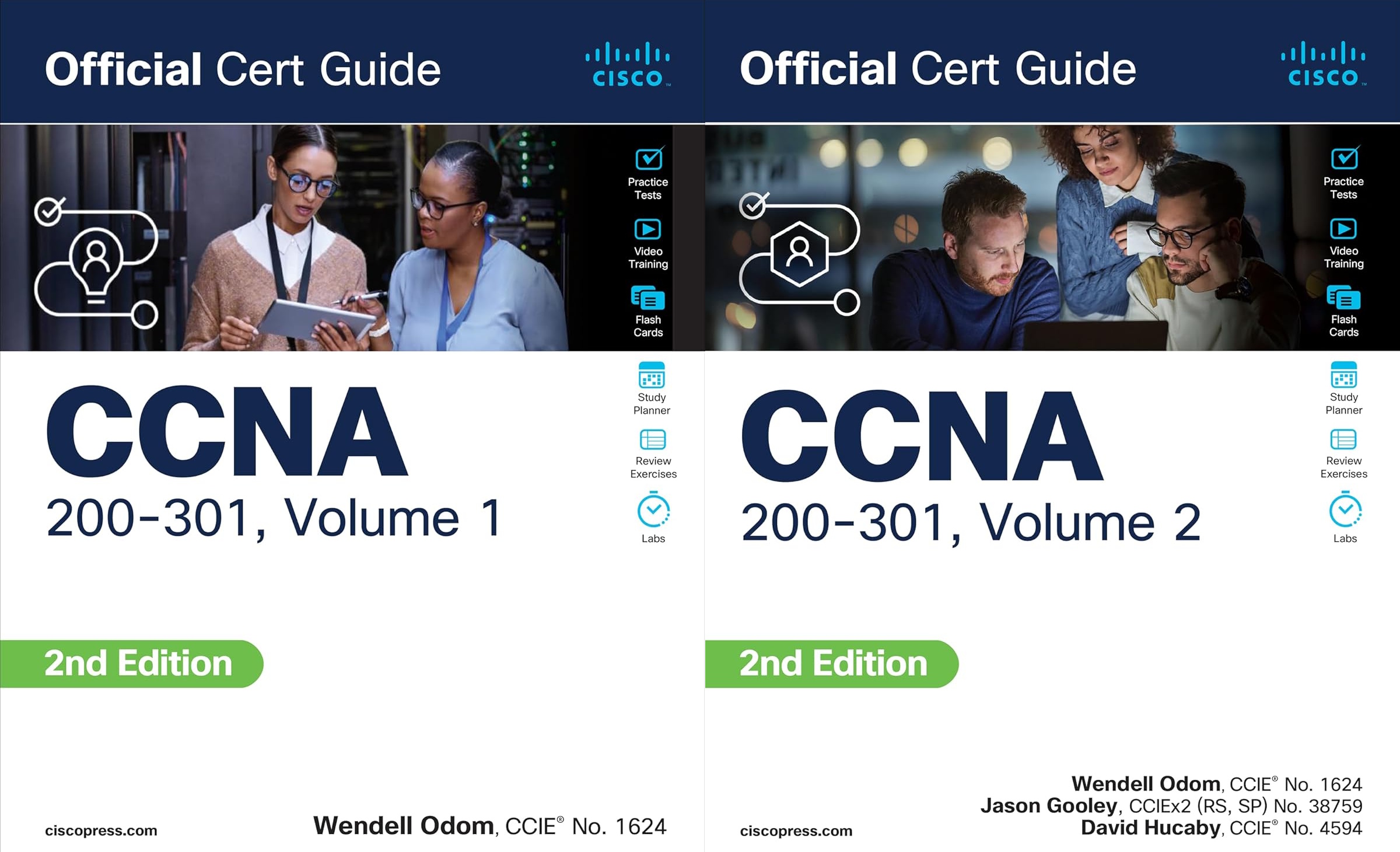
Jeremy’s IT Lab (YouTube/Udemy): The Daily Driver
Jeremy’s free course on YouTube is a masterpiece of clarity. He covers every single exam objective in a methodical, easy-to-follow way. What I particularly appreciate is his direct, no-fluff teaching style; he gets straight to the point without wasting time on personal anecdotes or jokes, maximizing learning efficiency.
How I Used It
This was my daily video content. My routine was simple: watch one of Jeremy’s videos, take detailed notes, and then immediately move on to the corresponding lab he provides. This 1:1 mapping of video-to-lab was crucial. Crucially, his labs don’t hold your hand; they give you the objective and expect you to apply what you’ve learned, which is fantastic for building true problem-solving skills.
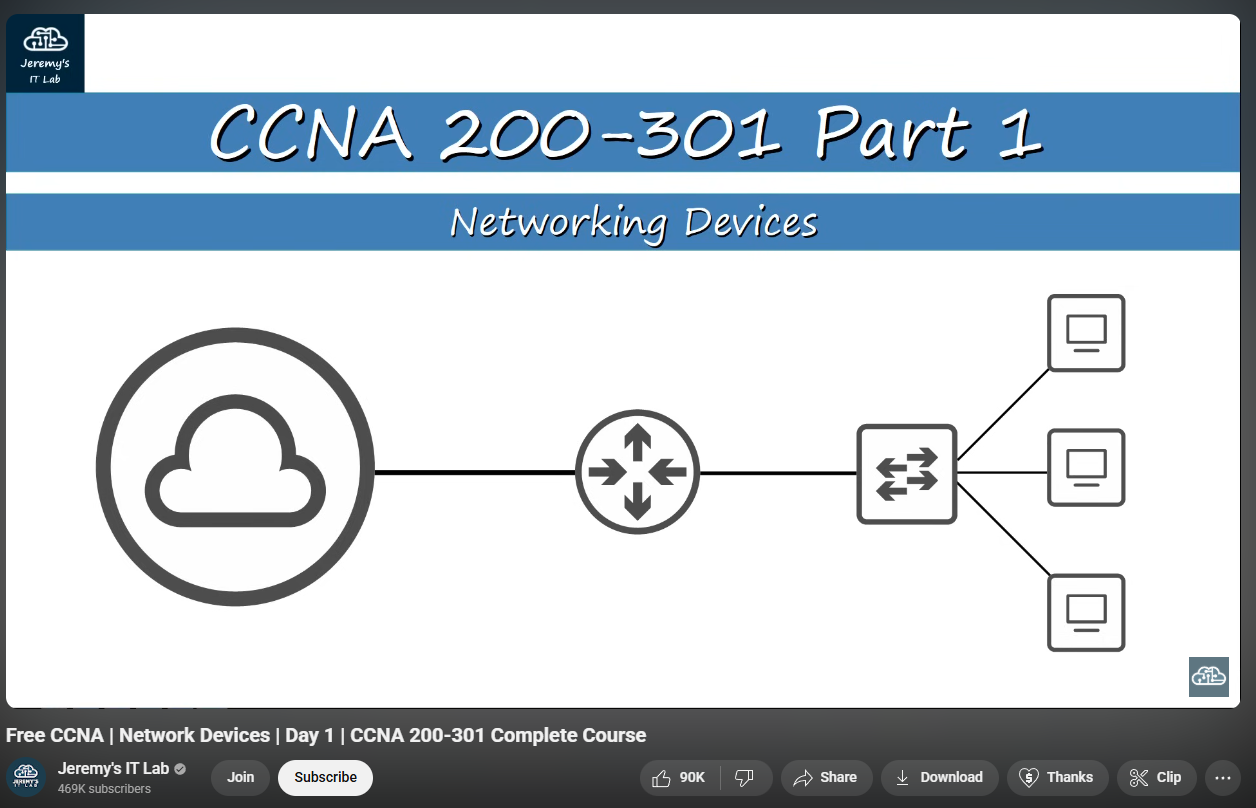
Keith Barker (YouTube): The Specialist
Sometimes, a concept just doesn’t click. That’s where Keith Barker comes in. His energy is infectious and his teaching style is truly unique. More than just clarifying a topic, he has a gift for making you fall in love with networking. He can take a complex subject and make it feel not only simple but exciting.
How I Used It
Whenever I felt stuck on a specific topic like VTP, EtherChannel, or OSPF LSA types, I’d search for Keith’s video on it. His explanations were like a lightbulb turning on, perfect for reinforcing a single concept I was struggling with.
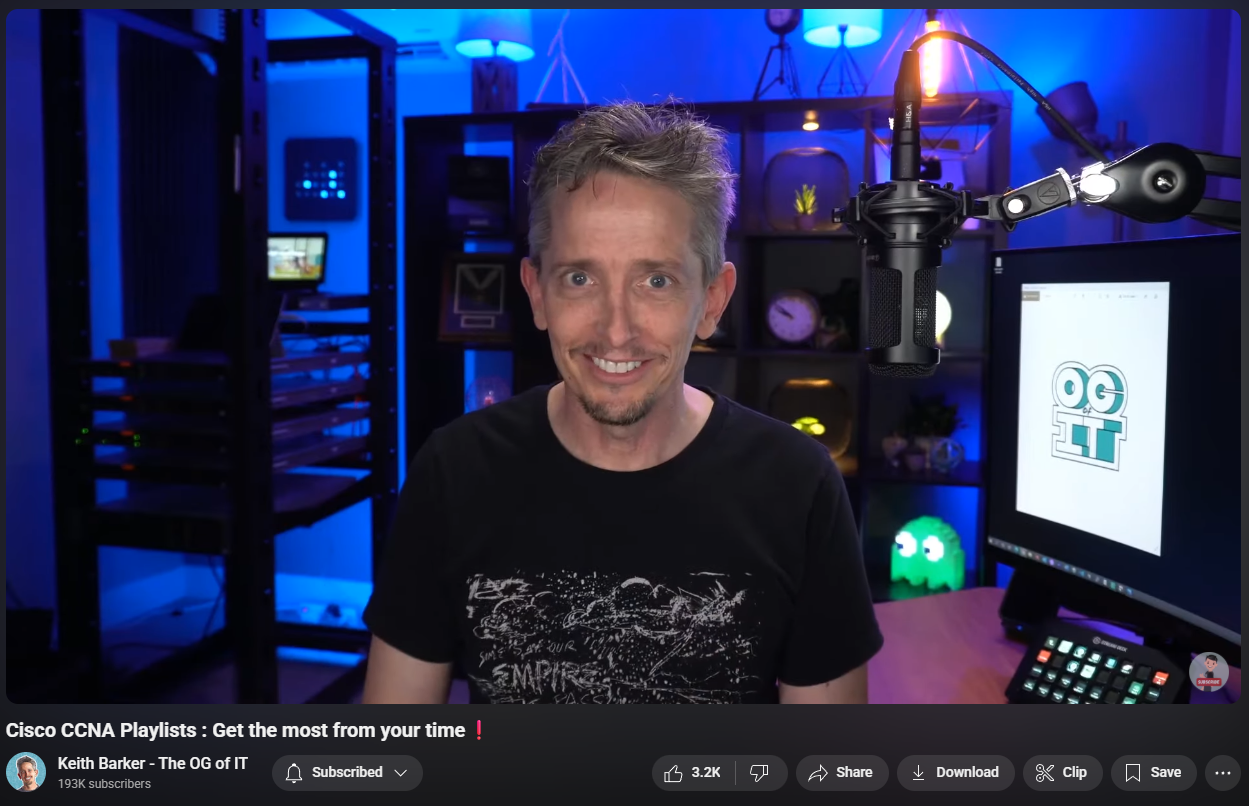
Kevin Wallace’s Training: The High-Level View
It’s easy to get “learning tunnel vision” when you’re deep in one resource. Kevin Wallace’s course offered a different perspective, which I found incredibly valuable.
How I Used It
Early in my studies, I used this course to get a high-level overview. It helped me see the forest before diving into the individual trees with Odom’s guide. It also works great as a final review to tie everything together.
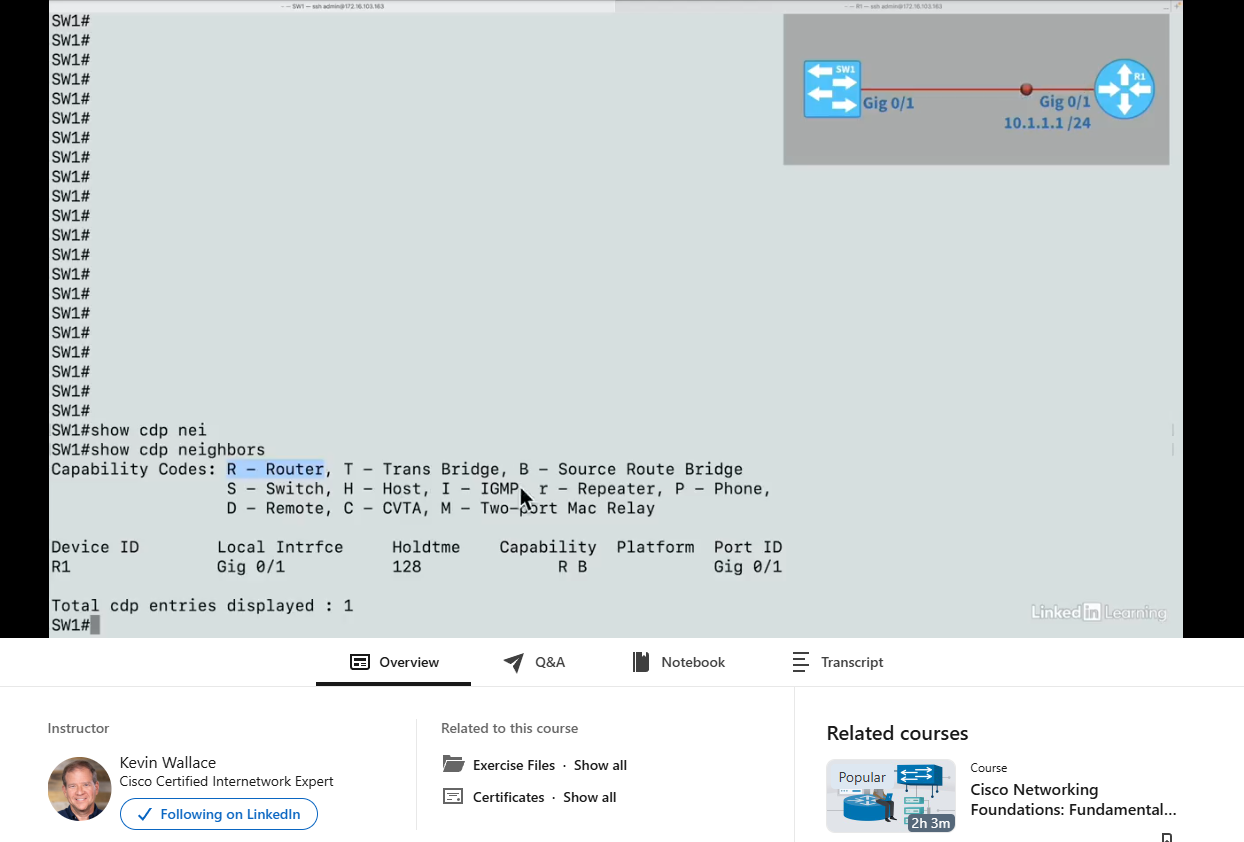
💻🛠️ Pillar 2: Forging Skills (Lab)
There is absolutely no substitute for hands-on practice. The CCNA is a practical exam, and the command-line interface (CLI) needs to feel like home. My approach combined dedicated lab tools with excellent sources for practical examples, like Jeremy’s IT Lab and Wendell Odom’s CertSkills Blog, to ensure I understood the concepts from multiple angles.
Tool #1 - Cisco Packet Tracer: The Sandbox
This free tool from Cisco is absolutely indispensable. It’s a network simulator that is perfect for building topologies, getting comfortable with the CLI, and testing 90% of the concepts on the CCNA exam.
How I Used It
I lived in Packet Tracer. It was my virtual lab bench for all of Jeremy’s IT Lab exercises and for building my own custom topologies to test “what if” scenarios. Don’t be afraid to break things here: that’s the point!
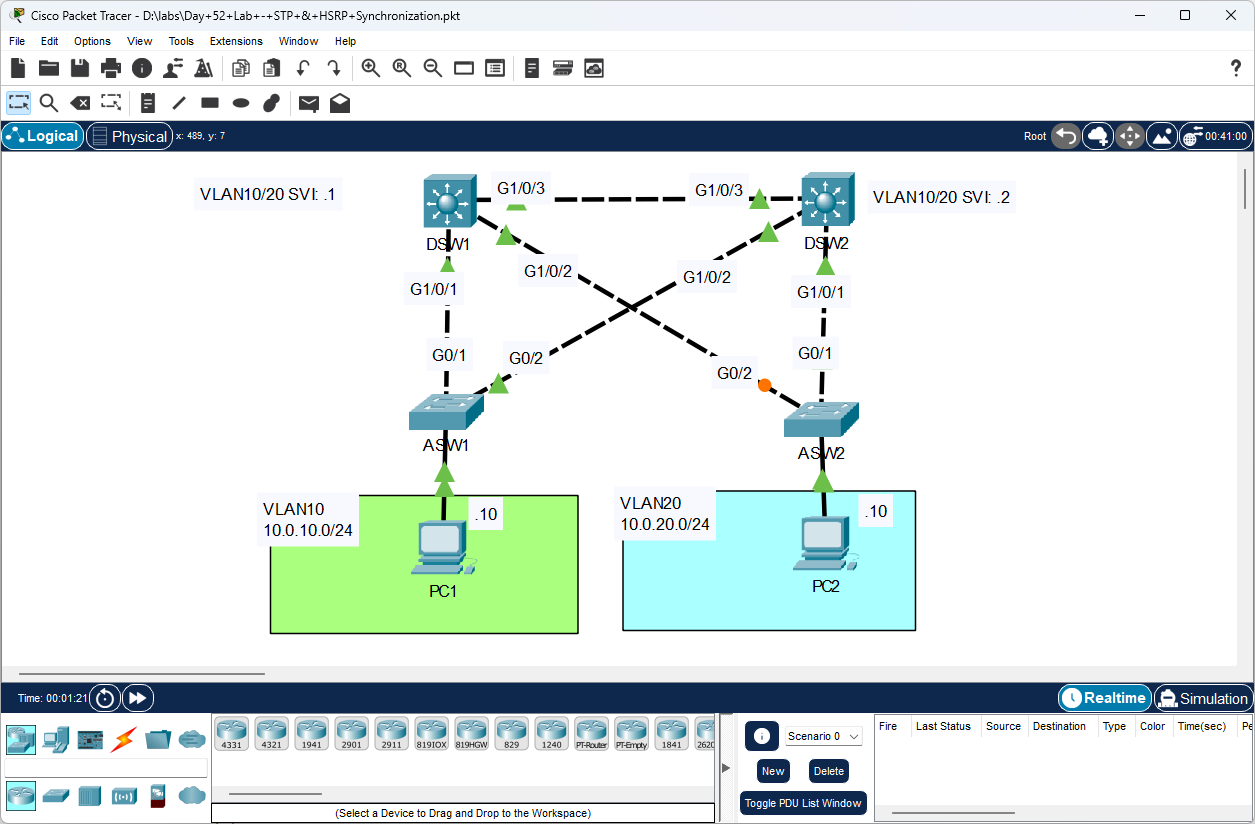
Tool #2 - Cisco Modeling Labs - Personal: The Reality Check
While Packet Tracer is a fantastic simulator, CML is an emulator that runs real Cisco IOS images. This provides a more accurate and authentic lab experience. Its initial setup requires more effort compared to the plug-and-play nature of Packet Tracer, as it needs to be run as a virtual machine (VM) in a hypervisor like VMWare Workstation or VirtualBox. However, this effort is absolutely worth it for the realism it provides.
How I Used It
After getting comfortable with concepts in Packet Tracer, I used CML to get a feel for a real Cisco IOS environment. Experiencing the subtle differences in command output and behavior provides a valuable reality check that builds confidence for real-world scenarios.

✅ Pillar 3: Validating Your Knowledge (Test)
Practice exams are not just for measuring your score; they are a critical learning tool. The goal is to find your weak spots and fix them before the real exam. The real value is in reviewing the answers you got wrong and the ones you got right.
Boson ExSim: The Final Boss
Yes, it’s pricey, but Boson ExSim was the single most important purchase I made for my final preparation. The questions are tough, the simulations are spot-on, and the detailed explanations for every single answer are worth their weight in gold. It felt incredibly close to the real exam.
ProTip: My Boson Strategy
I reserved Boson for my final preparation phase. My method was to take an exam in Simulation mode to replicate the pressure of the real test. Afterwards, I would spend hours meticulously reviewing every single question and its explanation, regardless of whether I got it right or wrong. The goal wasn’t just to see a score, but to understand the ‘why’ behind each answer. This deep review process allowed me to identify and patch up my weak spots, with the aim of improving with each attempt.
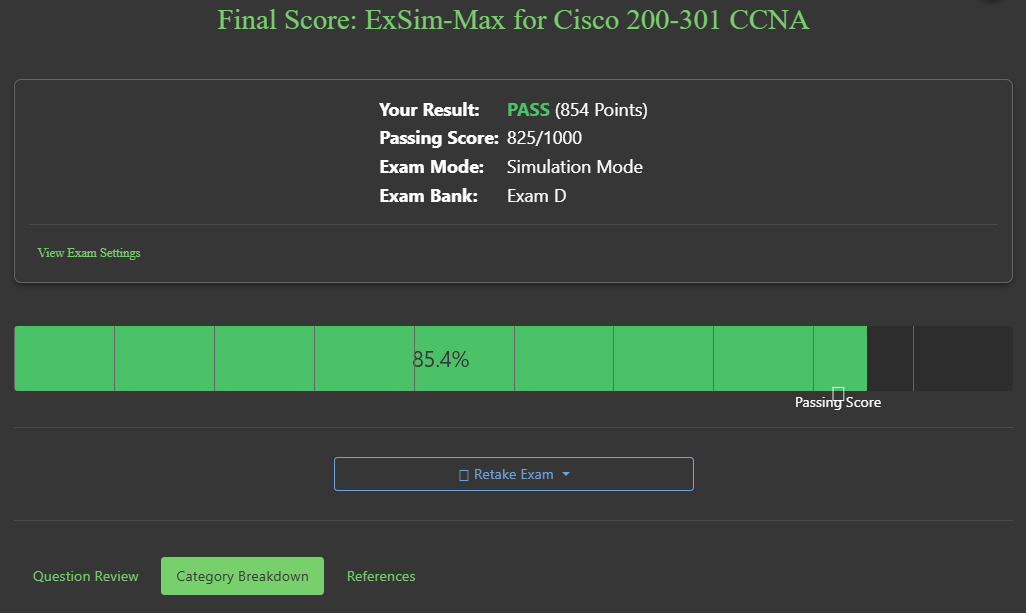
CBT Nuggets & Keith Barker’s Quizzes: The Knowledge Boosters
These were my tools for continuous, lower-stakes testing to reinforce what I’d learned.
How I Used Them
Keith Barker’s quiz playlists on YouTube are a uniquely fun way to test your knowledge. These are recordings of his past interactive live sessions where viewers would answer questions in real-time against a countdown timer. Even though they are no longer live, watching them is incredibly valuable. You get to see how a live audience voted (which is often revealing), hear Keith’s condensed explanations, and pick up the valuable little tidbits he sprinkles in between questions. It’s an engaging and entertaining way to reinforce concepts.
I also used the CBT Nuggets CCNA course (via their free trial) to get access to another pool of practice questions. This exposed me to different question phrasing and helped solidify concepts long before I faced the intensity of Boson.
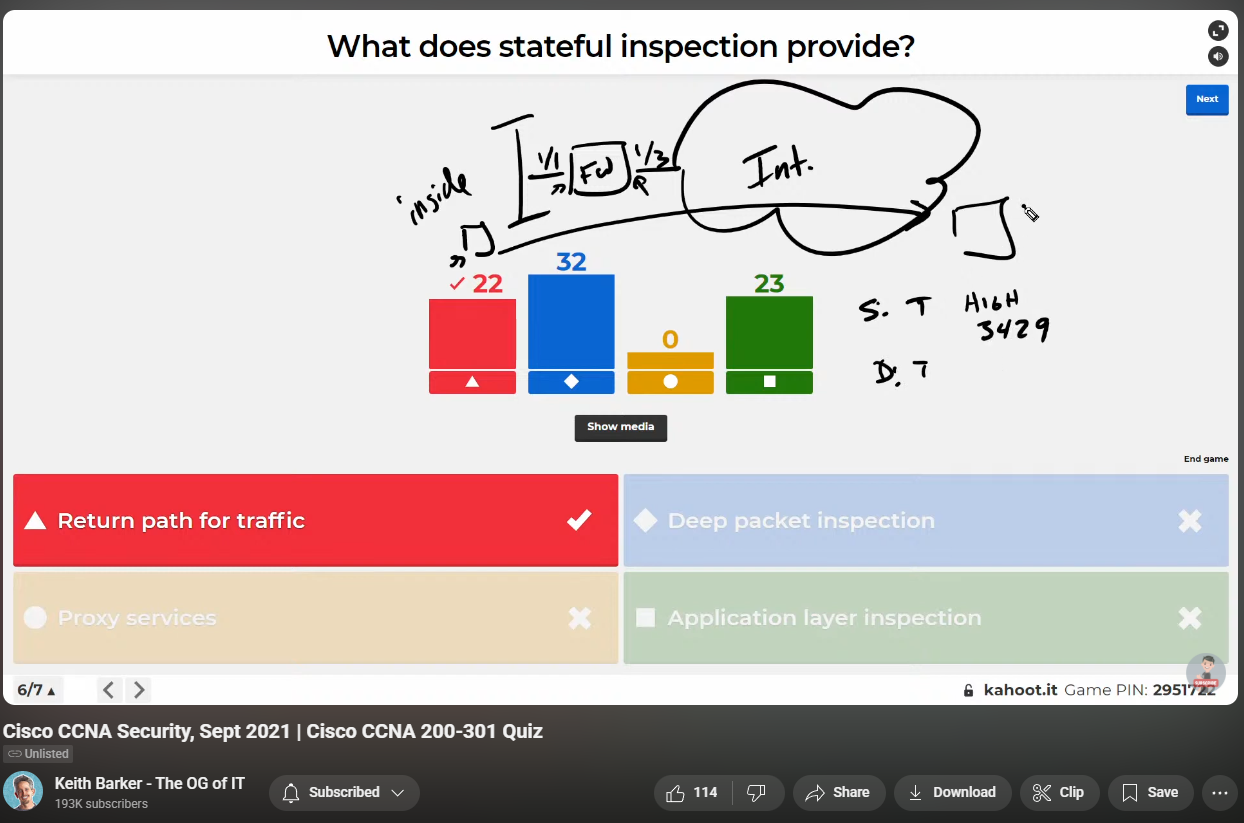
Final Thoughts
The CCNA is a marathon, not a sprint. The key is to find a set of resources that work for you and apply them within a structured plan. Be consistent, stay curious, and don’t be afraid to struggle: that’s where the real learning happens. You can absolutely do this.
Beyond just passing an exam, earning the CCNA provides powerful, foundational knowledge. Regardless of the specific tech role you aspire to, whether it’s network engineering, cybersecurity, cloud, or even DevOps, a solid understanding of networking is the bedrock upon which everything else is built. This certification provides that essential foundation, opening doors to a multitude of roles and building the problem-solving mindset critical for a successful career in tech.
Thanks for reading my first-ever post. I’m excited to share more from my journey in tech, offering practical insights and guides along the way. Be sure to check back soon.